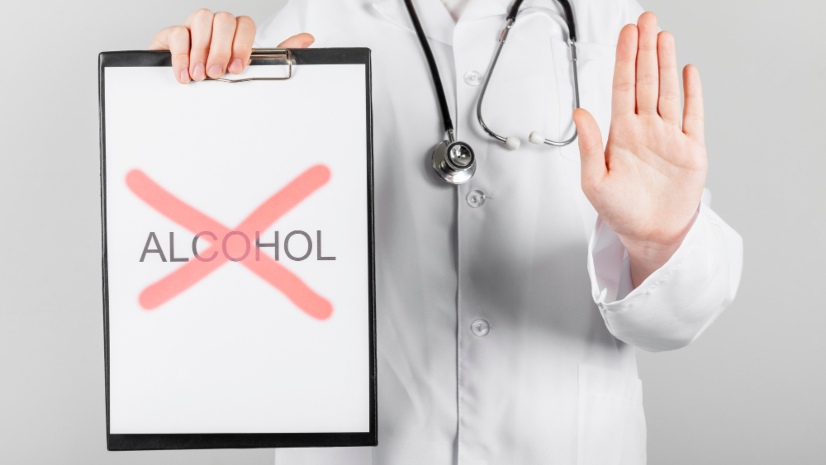Breaking Free from Addiction: Guide to Drug and Alcohol Treatment
Drug and alcohol addiction is a widespread issue that affects individuals, families, and communities. Seeking treatment is crucial for overcoming these dependencies and improving overall well-being. However, drug and alcohol treatment comes with its own set of challenges. This research article provides an overview of various treatment options, the key components of effective treatment, the importance of helplines and support services, information on relevant agencies and services, online resources and websites, the intersection of mental health and drug addiction, and an overview of drug and alcohol treatment in Ontario. It aims to inform individuals struggling with addiction and encourage them to seek help.

Drug and Alcohol Treatment Options
There are several treatment options available for individuals dealing with drug and alcohol addiction. These include inpatient rehabilitation programs, outpatient treatment programs, and medication-assisted treatment (MAT).
Inpatient Rehabilitation Programs
Inpatient rehabilitation programs involve residing in a treatment facility for a specific period. They provide intensive, structured care aimed at helping individuals overcome addiction. Some benefits of inpatient programs include round-the-clock support, a structured environment, and access to medical and mental health services. However, drawbacks may include higher costs, separation from family and work responsibilities, and limited flexibility. The success rates and statistics of inpatient rehabilitation programs vary depending on individual circumstances and the program itself.
Outpatient Treatment Programs
Outpatient treatment programs allow individuals to receive treatment while living at home and attending regular therapy sessions. These programs offer flexibility and allow individuals to continue their daily activities. Benefits of outpatient treatment include lower costs, access to community support, and the ability to practice learned skills in real-life situations. However, drawbacks may include limited supervision, exposure to triggers, and a higher risk of relapse. The success rates and statistics of outpatient treatment programs also depend on individual factors and the program’s quality.
Medication-Assisted Treatment (MAT)
MAT combines behavioral therapy with prescribed medications to treat substance use disorders. Medications used in MAT help reduce cravings and withdrawal symptoms, allowing individuals to focus on their recovery. Some common medications used in MAT include methadone, buprenorphine, and naltrexone. MAT has been found to be effective in reducing substance use, improving treatment retention, and preventing overdose-related deaths. However, it is not without considerations, such as potential side effects, dependence on medications, and the need for ongoing monitoring and support.
Key Components of Effective Treatment
Effective drug and alcohol treatment encompasses several key components, including detoxification, behavioral therapies, and holistic approaches.
Detoxification
Detoxification is the process of clearing drugs or alcohol from the body and managing withdrawal symptoms. It is typically the first step in treatment and can be done in an inpatient or outpatient setting. Medical supervision and support are crucial during detoxification to ensure safety and provide necessary medications or treatments. Potential complications and risks of detoxification include severe withdrawal symptoms, medical emergencies, and the risk of relapse.
Behavioral Therapies
Behavioral therapies are an essential part of drug and alcohol treatment. They help individuals identify and change destructive behaviors, develop coping mechanisms, and learn relapse prevention strategies. Cognitive-behavioral therapy (CBT) is a commonly used approach that focuses on identifying and modifying negative thought patterns and behaviors. Motivational interviewing helps individuals explore their motivations for change and increase their commitment to treatment. Group therapy and support groups provide a supportive environment where individuals can share experiences, gain insights, and receive encouragement from peers.
Holistic Approaches
Holistic approaches recognize the importance of treating the whole person—mind, body, and spirit. These approaches complement traditional therapies and may include mindfulness and meditation practices to promote self-awareness and stress reduction. Regular exercise and proper nutrition are also emphasized to improve physical and mental well-being. Alternative therapies, such as acupuncture or art therapy, may be utilized to address individual needs and preferences.
The Intersection of Mental Health and Drug Addiction
There is a strong relationship between mental health and substance abuse. Many individuals with addiction also experience mental health disorders, and vice versa. Dual diagnosis refers to the co-occurrence of substance use disorders and mental health disorders. Integrated treatment approaches that address both conditions simultaneously are essential for successful recovery.
Drug and Alcohol Treatment in Ontario Registry
Ontario has a comprehensive registry for drug and alcohol treatment, which provides information and resources for individuals seeking help in the province. The registry offers a range of services and treatment options tailored to meet individual needs.
Q&A
The different types of drug and alcohol treatment options include inpatient rehabilitation programs, outpatient treatment programs, and medication-assisted treatment (MAT).
The success rate of inpatient rehabilitation programs varies depending on individual factors and program quality.
Medication-assisted treatment (MAT) combines medications with behavioral therapy to manage cravings and withdrawal symptoms.
Potential complications and risks of detoxification include severe withdrawal symptoms, medical emergencies, dehydration, and the risk of relapse.
Common behavioral therapies used in drug and alcohol treatment include Cognitive-Behavioral Therapy (CBT), motivational interviewing, and group therapy.
Holistic approaches benefit individuals in treatment by addressing the mind, body, and spirit through practices like mindfulness, exercise, nutrition, and alternative therapies.
Available helplines for drug and alcohol abuse include the National Helpline for Substance Abuse and Mental Health Services, Alcohol and Drug Helpline, and National Drug Helpline.
Drug and alcohol agencies provide services such as assessment, counseling, detoxification, education, aftercare planning, and referral to other resources.
The Dart addiction website offers services including information on treatment options, recovery support, and educational materials.
Mental health intersects with drug addiction through the co-occurrence of mental health disorders and substance use disorders, requiring integrated treatment approaches.
In Ontario, there are various resources and services available for drug and alcohol treatment, which can be accessed through the Ontario registry for drug and alcohol treatment.
